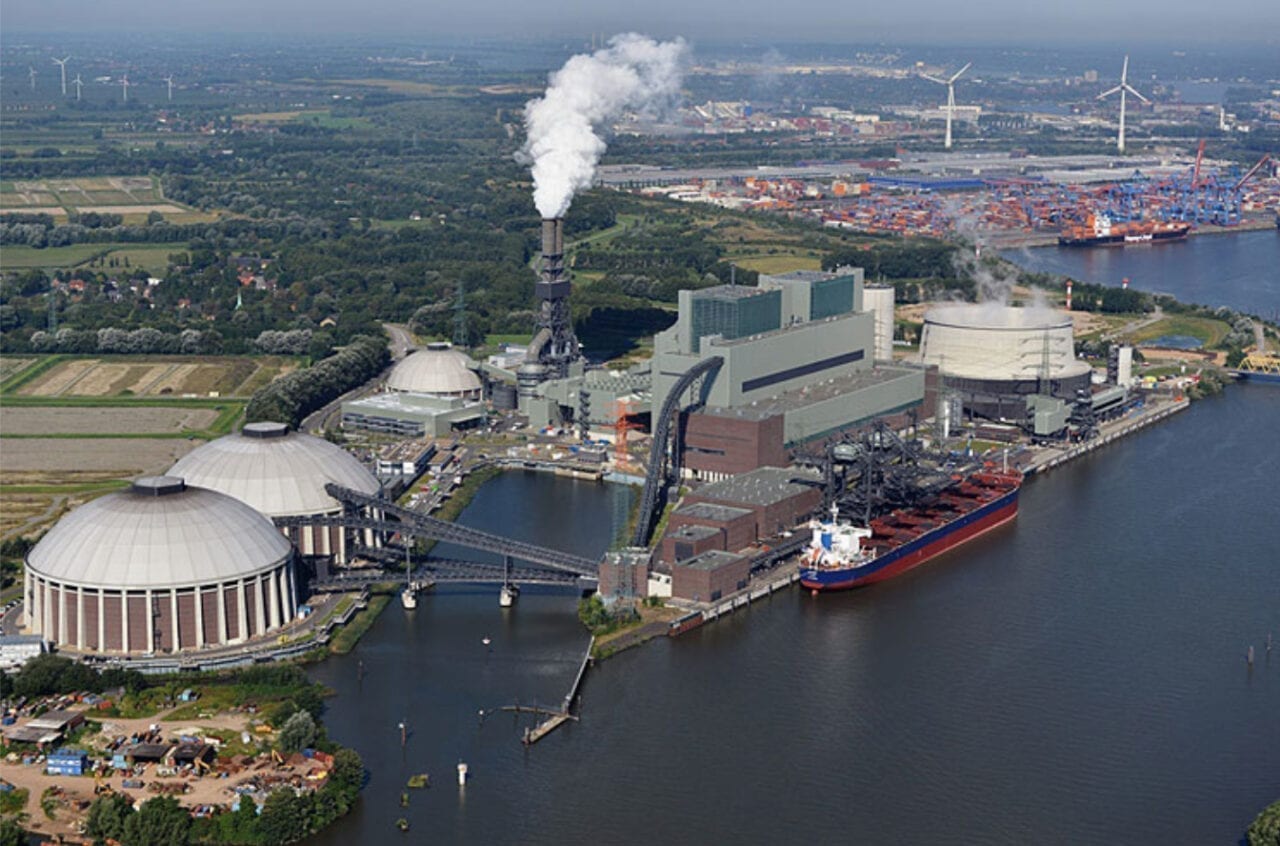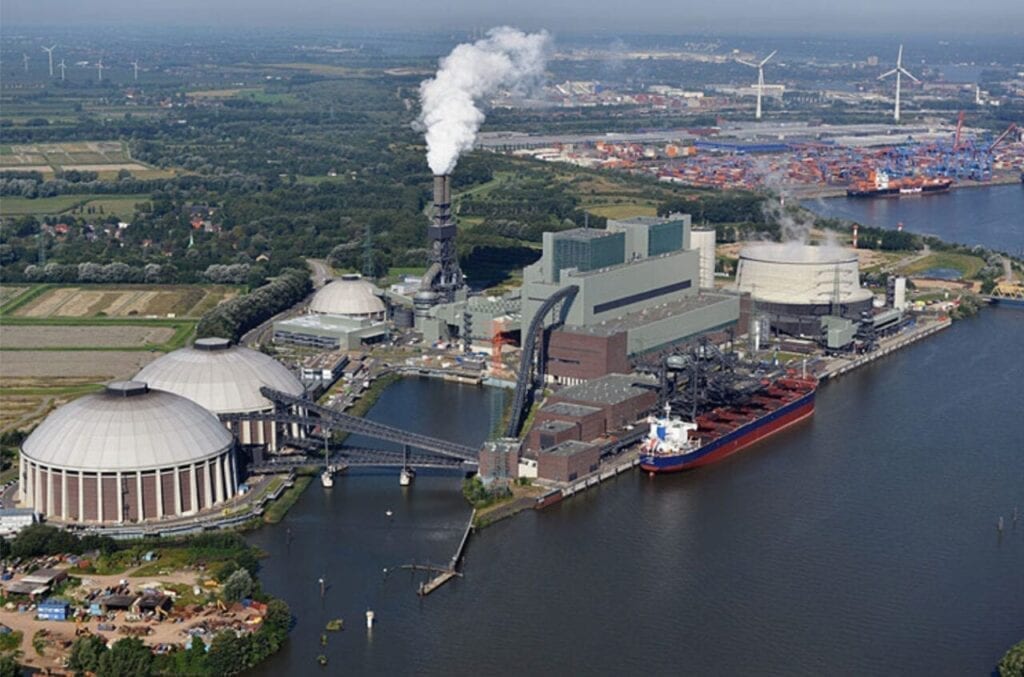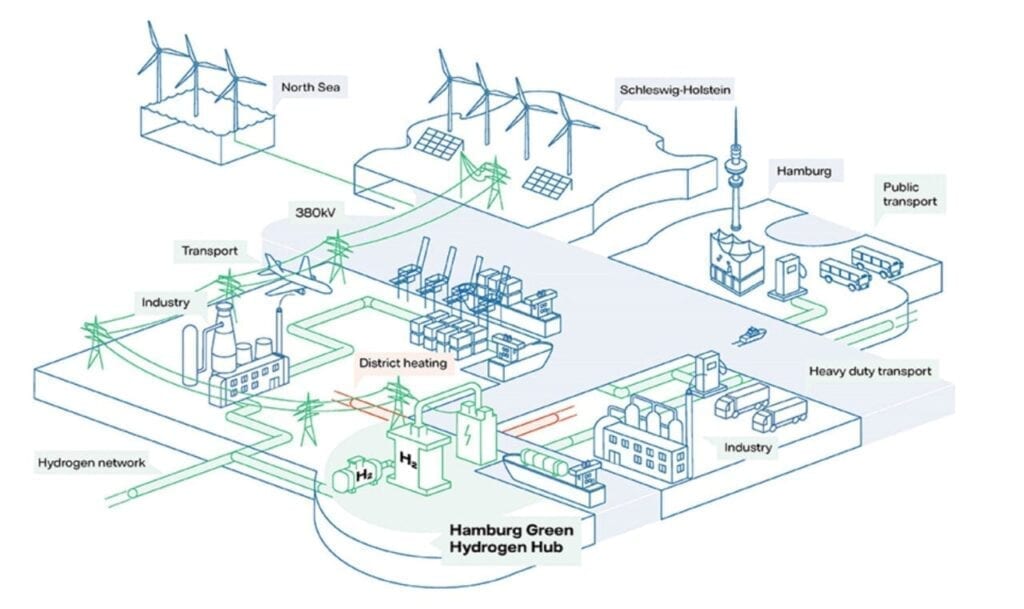1.6-GW Coal Plant May Get New Life as Green Hydrogen Hub
The post 1.6-GW Coal Plant May Get New Life as Green Hydrogen Hub appeared first on POWER Magazine.

Global technology heavyweights Shell and Mitsubishi Heavy Industries, Swedish state-owned energy firm Vattenfall, and German municipal heat generator Warme Hamburg are teaming on a massive project to repurpose a 2015-commissioned 1.6-GW coal plant in northern Germany as a massive green hydrogen hub.
The four companies in January said they signed a letter of intent to explore how to jointly produce hydrogen from wind and solar power at the Hamburg-Moorburg power plant site through a scalable electrolyzer with an initial output of 100 MW. Vattenfall, which wholly owns Moorburg (Figure 1), completed the two-unit hard coal-fired plant at its site on the Southern Elbe river in the Port of Hamburg in 2015, after nearly 11 years of planning and construction.
The coal plant replaced a retired gas-fired power plant operated by Hamburgische Electricitats-Werke. At the time, though wind and solar shares were steadily growing in northern Germany, the $3 billion plant was envisioned as a crucial source of reliable baseload power to supply Hamburg's 1.8 million people and its energy-intensive industry, particularly because Germany had embarked on plans to phase out nuclear power by 2022.
 1. An aerial view of 1.6-GWe/30-MWth Moorburg combined heat and power plant, which was commissioned in 2015. The Hamburg Container Terminal Altenwerder can be viewed in the background. Courtesy: Vattenfall
1. An aerial view of 1.6-GWe/30-MWth Moorburg combined heat and power plant, which was commissioned in 2015. The Hamburg Container Terminal Altenwerder can be viewed in the background. Courtesy: VattenfallUntil Moorburg came online, Hamburg imported nearly 85% of its power, Vattenfall said. As a modern plant, developers designed Moorburg as a highly flexible project, designed to optimally use heat generated during electricity production. In 2016, Vattenfall began supplying process steam to a neighboring refinery, rendering Moorburg into a combined heat and power plant with the potential to supply up to 650 MWth of district heating, which could increase fuel efficiency to about 60%, according to Vattenfall. To respond to market conditions, the company also invested heavily in additional flexibility efforts. In 2018, Vattenfall reported the plant was capable of ramping up or down by 500 MW in just 10 minutes.
In January 2020, Germany's federal cabinet approved a nationwide phaseout of coal generation by 2038, but it set a more imminent 2026 deadline for its 23-GW hard coal fleet. To incentivize early closures, the government planned to compensate hard-coal generators, and in December 2020, Vattenfall won a compensation bid (amount undisclosed) for early closure of Moorburg. The company said that as part of its next steps, German transmission system operators will determine by March 2021 whether Moorburg is needed for reliability. If the plant is not classified as system relevant, Vattenfall plans to permanently stop coal firing at the plant by July 2021.
In January, Vattenfall, MHI, Shell, and Warme Hamburg said the Moorburg site was ideally suited to the envisioned Green Energy Hub" (Figure 2). It is connected to both the national 380,000-volt transmission network and the 110,000-volt network of the City of Hamburg. In addition, overseas ships can call at the location directly and use the quay and port facilities as an import terminal," they noted in a joint statement. The municipal gas network company also intends to expand a hydrogen network in the port within ten years and is already working on the necessary distribution infrastructure. Numerous potential customers for green hydrogen are located near the site, thus enabling the project to cover the entire hydrogen value chain-from generation to storage, transport, and utilization in various sectors."
 2. Mitsubishi Heavy Industries (MHI), Shell, Vattenfall, and German municipal company Warme Hamburg are exploring a project to repurpose the 1.6-GW Moorburg CHP plant site in Hamburg, Germany, as a Green Hydrogen Hub." Courtesy: MHI
2. Mitsubishi Heavy Industries (MHI), Shell, Vattenfall, and German municipal company Warme Hamburg are exploring a project to repurpose the 1.6-GW Moorburg CHP plant site in Hamburg, Germany, as a Green Hydrogen Hub." Courtesy: MHIVattenfall, notably, is already gearing up to clear partial areas of the site. The four partners also plan to apply for funding under the European Union's Important Projects of Common European Interest" (IPCEI) program by the end of the first quarter of 2021. Under a tentative outline of the project, if they proceed with a final investment decision, production of green hydrogen could begin as early as 2025. So far, the project appears to have the backing of the City of Hamburg, and its regional government.
While it is unclear which technology the partners are considering for the 100-MW power-to-gas converters, Fabian Ziegler, CEO of Shell in Germany, noted that the project may encapsulate the entire value chain for hydrogen"-from power production from offshore wind to the expansion of capacities for green hydrogen production as well as to the supply for mobility or transport applications and other industries." Christian Heine, CEO of Warme Hamburg GmbH and Gasnetz Hamburg GmbH, meanwhile, said that outside of the project's enormous potential" as a means for power storage, the project could provide climate neutral heat."
-Sonal Patel is a POWER senior associate editor (@sonalcpatel, @POWERmagazine).
The post 1.6-GW Coal Plant May Get New Life as Green Hydrogen Hub appeared first on POWER Magazine.